Ramzi Shadid and Mohammed Itair Travel Fellowship Report
Training Workshop at 3D GIS Research Lab
Malaysia, 11th Aug. – 7th Sept.
%2C%20Malaysia%20-%20With%20The%20German%20Group%20.jpg) |
Figure 1:Universiti Teknologi Malaysia(UTM), Malaysia
|
ACKNOWLEDGEMENTS
They normally say a day to remember, but for us it is a month to remember with its all details, which is hard to describe in a few words, but if we want to do that, we will say we are very proud, happy and lucky people to meet professor Alias Bin Abdul Rahman, the most generous, hospitable, kind and smart person we’ve ever met. You will never find someone who deals with his student as a father, who takes them to travel to several destinations with him on his own expenses, who invites them to share a dinner with him and his family many times, but for Professor Alias that’s normal, that’s something inherited in his character. The way he arranged each detail in our trip was awesome, unique and unforgettable, so we are very grateful for him and his assistants, and we ask Allah (God) to bless him and give him the health and longevity.
 |
Figure 2:Mohammed Itair, Professor Alis Bin Abdul Rahman & Ramzi Shadid, UTM, Malaysia
|
And before start going in details about our trip here, we would like to thank the Berkeley Undergraduate Prize for awarding us the unique opportunity of travelling to Malaysia, we will be always thankful for this chance which couldn’t happen at all without this encouraging and influential prize.
we would also like to thank our great families and our special friends for their permanent support during our whole life, especially our academic life, which we will never forget and it will remain a medal of thankfulness on our chests.
WEEK ONE – INTRODUCTION PRSENTAIONS
After we’ve landed at Sanai Airport, Johor Bahru, we met professor Alias’ students at the airport, they took us in a short trip inside and around UTM campus which is the second largest campus in Malaysia with 1148 hectare – area. Then, to our dorms and gave us the detailed schedule for our stay in Malaysia.
During the first week we took 3 introduction presentations, one of them was with the PhD students just to introduce the lab and the faculty of built environment at UTM, while the second one was with Dr. Muhammad Imzan bin Hassan about 3D GIS Modeling and 3D Cadastral Surveying, and the last one was with Dr. Ivin Amri bin Musliman about Geomatics, Photogrammetry and Remote Sensing.
By the end of the first week we went in another trip with the Master and PhD students to the city of Johor Bahru and visit many distinctive places like Sultan Abu Baker Mosque, Sultan House Museum, Johor Zoo, Singapore Water Front, Johor Night Bazar and of course tasting the very special Malaysian food.
.jpg) |
Figure 3: Sultan Abu Baker Mosque, Johor Bahru, Malaysia
|
WEEK TWO – LECTURES WITH PROFESSOR Alias
In the beginning of this week, we met Professor Alias, and he took us in another trip around the campus and to the city of Johor Bahru and talked to us about the Malaysian culture and history.
 |
Figure 4: Selfie with the Kindest people ever, Professor Alias and His Phd & Master Students, Johor Bahru Public Park, Malaysia
|
During this week, we have started to go the 3D GIS Lab, to attend lectures by Professor Alias about 3D city modeling and the publications of the lab, and to listen to the students and graduates of that lab who were very kind to share with us a lot of useful and special books.
 |
Figure 5: Lecture With Professor Alis, UTM, Malaysia
|
By the end of this week, Professor Alias took us to taste the special Asian Food, and to have a discussion about the following topics that would be presented during the following weeks. As there is a group of German students who joined us in our training workshop.
 |
Figure 6: Cafe time with The Prof, Johor Bahru, Malaysia
|
 |
Figure 7: Thai, Indian, Malaysian Food, Johor Bahru, Malaysia
|
WEEK THREE – THE INTENSIVE VISITS AND LECTURES WITH OUR GERMAN FRIENDS
Day 1: This week was full of academic activities and official visits, we started it by a lecture given by Professor Alias. After that we went directly to Faculty Dean, and finally we attend lecture given by Dr. Muhamad Uznir bin Ujang about 3D Modeling Methods in addition to a 3D Scan Training.
 |
Figure 8: Assoc. Prof. Dr. Zulkepli bin Majid, the Faculty Dean, UTM, Malaysia
|
Day 2: In this day we visited the UTM Observatory and after that we came back to the Lab to do processing for that collected data.
 |
Figure 9: UTM Observatory Visit, Malaysia
|
Day 3: A free and easy day, we went to the city to try the Malaysian Fruits and drinks.
 |
Figure 10: With The King Of Fruits Durian, Johor Bahru, Malaysia
|
 |
Figure 11: Here we are again Malaysians, Germans and Palestinians, Johor Bahru, Malayisa
|
Day 4: in this day we have visited the Security Building with Dr. Ivin Amri and attend a presentation there about the used techniques in securing the campus. After that we went to the BIM Center with Dr. Muhamad Uznir to explore the VR techniques.
 |
Figure 12: Security Building, UTM, Malaysia
|
Day 5: in this day we made a presentation about Palestine (Culture & History), and by the end of the day, there was a Certificates presentation by Professor Alias and his assistants.
 |
Figure 13: Our Presentation, UTM, Malaysia
|
 |
Figure 14: Certificates presentation, UTM, Malaysia
|
WEEK FOUR – ENTERTAINMENT WEEK
The last and the most special week during our trip, during this week we have visited several destinations in Malaysia, especially Melaka City, Kula Lumpur City and Tioman Island, and during our visit to those places we did a lot of interesting activities, as snorkeling, visiting historical sites, shopping … etc.
 |
Figure 15: Traditional House In Melaka, Malaysia
|
 |
Figure 16: Tioman Island, Malaysia
|
Last but not least, we are really grateful to every one participated to make this trip one of the best experiences for us.
Best Regards,
Mohammed Itair
Ramzi Shadid
 |
Figure 17: Dinner at the Professor's House
|
|
|
|
 Blocked drains, Almora, India, 2017. Highlighting the problem of waste management and a potential threat in case of excessive rainfall. Photo credit: Neelakshi Joshi
 The Bullitt Center, Seattle, USA., 2013. The Bullitt Center is one of the greenest commercial buildings in the world. It is also the first urban infill projects to pursue and to receive a "Living Building" certification from the Interational Living Future Institute. The roof "prow" allows for an extended array of photovoltaic panels allowing the building to produce more electricity then it uses. Architect: Miller Hull. Photo credit: Brad Kahn ( http://www.bullittcenter.org/; https://en.wikipedia.org/wiki/Bullitt_Center)
 The Bullitt Center, Seattle, USA. Designed to have a 250-year lifespan, the building was also constucted without the use of common toxic building materials. It was the first mass timber building constructed in Seattle in 80 years. Photo credit: Brad Kahn (http://www.bullittcenter.org/; https://en.wikipedia.org/wiki/Bullitt_Center)
 The Bullitt Center, Seattle, USA. The rooftop solar panel array. The building also features an onsite rainwater-to-potable water system, an onsite composting toilet system, and 26 geothermal wells extending 120 m (400 feet) into he ground that help heat the building in the winter and cool it in summer. Photo credit: Brad Kahn (http://www.bullittcenter.org/; https://en.wikipedia.org/wiki/Bullitt_Center)
 Soso House, Leh, India. Designed and built by: Sonam Wangchuck and Neelakshi Joshi, 2016. Combining local earth and solar resources to address housing needs in a cold desert region. Photo credit: Neelakshi Joshi.
 Flux.Land is a geospatial risk and planning platform developed for Broward County, Florida by the University of Toronto's Daniels Faculty + MIT Urban Risk Lab. The Platform helps visualize various distinct elements of the built and natural environment, land use code and policy, in relation to climate risk and vulnerabilities. Image courtesy of Fadi Masoud. (https://www.urbanrisklab.org/fluxlad/)
 Flux.Land, Broward County, Florida, USA. "Our goal is to design and develop a web-based tool for Broward County to understand the potential adaptability of the urban fabric to manage the dynamic hydrological condition in the face of increased vulnerability due to climate change." Image courtesy of Fadi Masoud. (https://www.urbanrisklab.org/fluxlad/)
 Housing Project, Auroville, India. Building designed and built by: Auroville Earth Institute, 2012. A 17-unit housing project built using compressed earth blocks. An example of low cost and low carbon footprint housing. Photo credit: Neelakshi Joshi
 The Floating Village, Kompong Khleang, Cambodia. This village is a striking example of vernacular flood adaptation, and potentially a model for low-lying areas where climate change is resulting in increased flooding. Photo credit: Yohann Legrand. (http://www.bbc.com/travel/story/20150915-where-houses-are-designed-to-float)
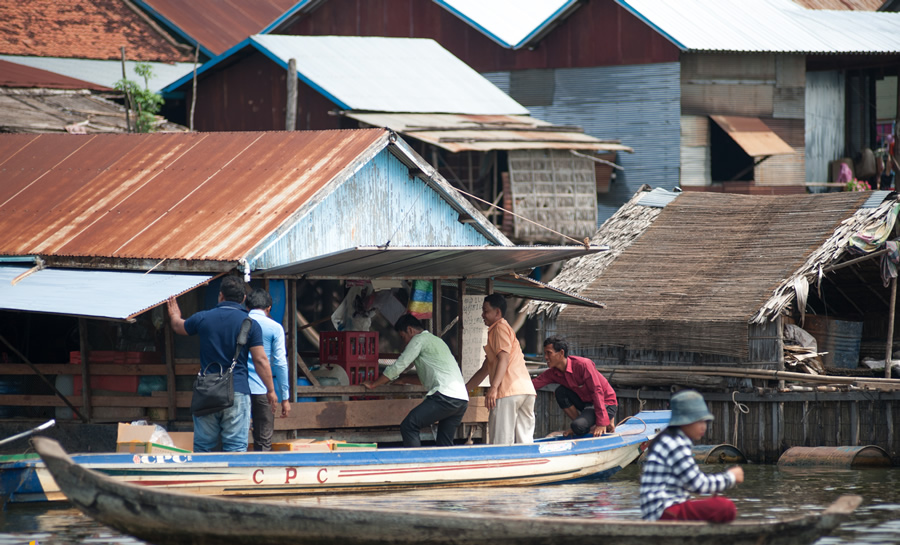 The Floating Village, Kompong Khleang, Cambodia. This fishing village sits on the Tonle Sap Lake that historically rises as much as five-fold during the rainy season. Houses are built both on stilts and as floating habitats. Photo credit: Yohann Legrand. (http://www.bbc.com/travel/story/20150915-where-houses-are-designed-to-float)
 Old City of Shibam, Yemen. This 16th century city of towers in the Wadi is an outstanding example of density and natural climate control. The city is on the United Nations World Heritage Danger List. Built of mud and located in a flood prone area, the city "remains at severe risk of major damage unless necessary preventive measures are taken...[involving] the conservation and use of Shibam oases, which are considered as the buffer zone of the property." Photo credit: Will De Freitas. (https://whc.unesco.org/en/list/192)
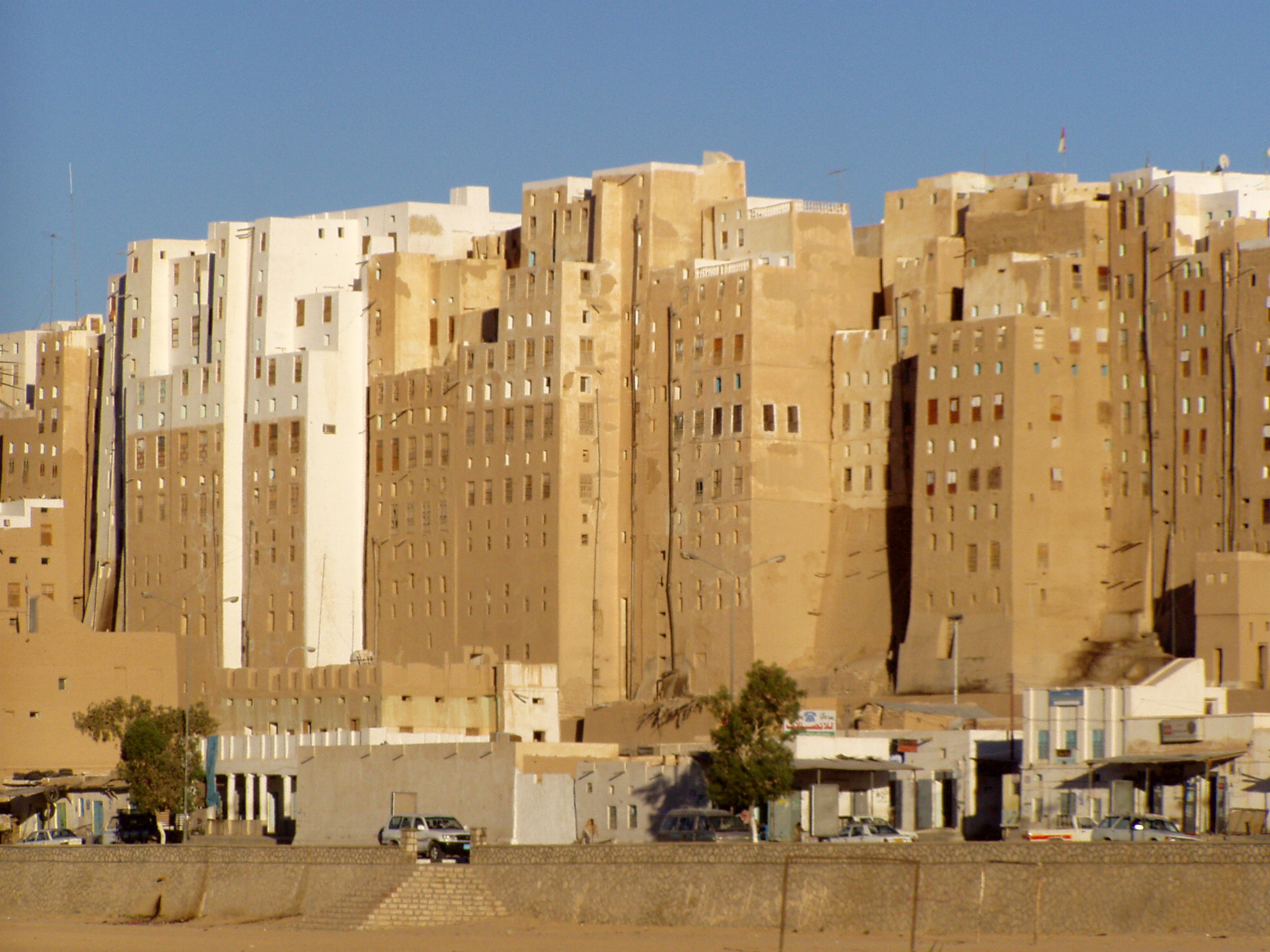 Old City of Shibam, Yemen. From the World Heritage listing: "Abandonment of the old agricultural flood management system in the wadi, the overloading of the traditional sanitary systems by the introduction of modern water supply combined with inadequate drainage, together with changes in the livestock management have all contributed to the decay of the city." Photo credit: Twiga_Swala
 Water Tank, Rweru Green Village, Rwanda, 2016. Rwanda's Green Fund invested in Rweru Green Village by providing water tanks, including this one which is connected to mains water to serve the community in times of drought. Photo Credit: Rwanda Green. (http://www.fonerwa.org/)
 Boston’s Resiliency Districts, Boston, Massachusetts, USA. The Norman B. Leventhal Center for Advanced Urbanism at MIT introduced a working concept of “resilient districts” for urban areas that are vulnerable to climate impacts. Resilient Districts include four central tenets 1) protecting critical infrastructure, 2) thickening regional soft systems, 3) transferring density to less vulnerable areas, and 4) encouraging landscape-based land uses in low laying areas. Image courtesy of Fadi Masoud. (http://lcau.mit.edu/)
 Shallow Dome Residence, Kalyani (near Kolkata), India. Designed by: Laurent Fournier. This is a unique example where a formal architectural project has incorporated incredible innovations taking place outside the professional world to help improve environmental performance of formal construction industry. "Shallow dome roofing" developed by informal masons from a village in northern India have made it possible to reduce use of steel and cement in building construction lowering its carbon footprint. Photo credit: Avikal Somvanshi
 Rainwater tank, Jalna, India. Designed by and built by: Neelakshi Joshi, 2018. Preparing for water variability by enabling houses to be water sufficient. Photo credit: Neelakshi Joshi.
 Ladder House, Auroville, India. Designed and built by: Avikal Somvanshi and Manu Gopalan, 2012. A fast-track eco-friendly dis-mountable housing prototype that can be used to provide semi-temporary housing post-natural disaster in tropical regions. Built by unskilled volunteers using bamboo ladders, coconut-coir ropes and recycled tetrapak sheets on a retired tracker-trolley the structure has been use since. Photo credit: Avikal Somvanshi.
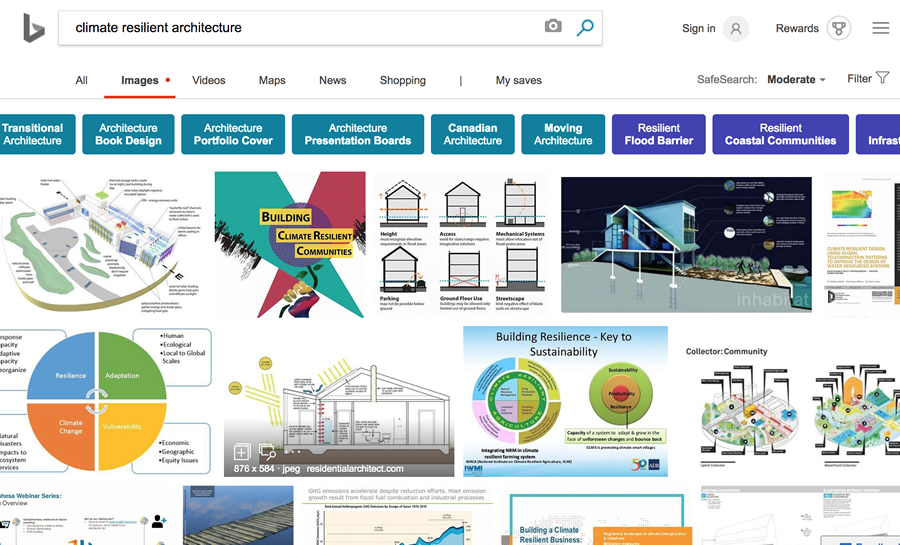 Bing Image Search: "Climate resilient architecture"
 Hunnarshala Foundation Office, Bhuj, Gujarat, India. Designed and built by: Sandeep Virmani and Kiran Vaghela. The campus is living laboratory of innovation and experiments with traditional building techniques and modern lifestyle requirements. The campus is splattered with examples how age-old construction practices can be brought to speed and help address the resource and resilience issues especially in rural areas. Photo credit: Avikal Somvanshi.
 Understanding community perceptions and preparations for a variable climate, 2017. Fieldwork conducted in emergent urban settlements of the Himalayas. Photo credit: Neelakshi Joshi.
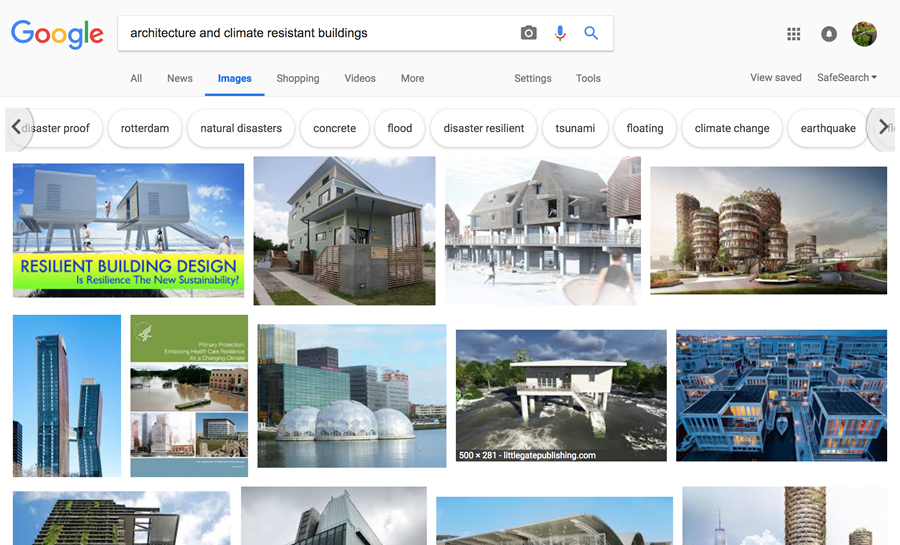 Google Image Search: "Architecture and climate resistant buildings"
1.jpg) Condominium 1 at the Sea Ranch, California, USA. Designed by: Donlyn Lyndon,. A wind-protected courtyard. Photo credit: Donlyn Lyndon.
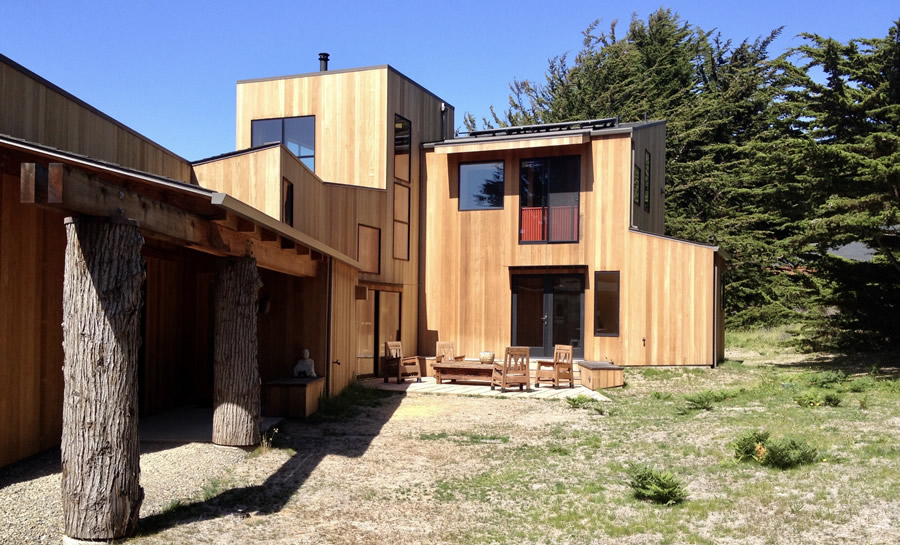 The Bowsprit House at the Sea Ranch, CA, USA. Designed by: Donlyn Lyndon FAIA, with Tomas Frank and Associates, Architects. Wind-sheltered courtyard with tower to gather light into the rooms of the house from all directions, and shading for south facing windows in the living spaces. Photo credit: Donlyn Lyndon.
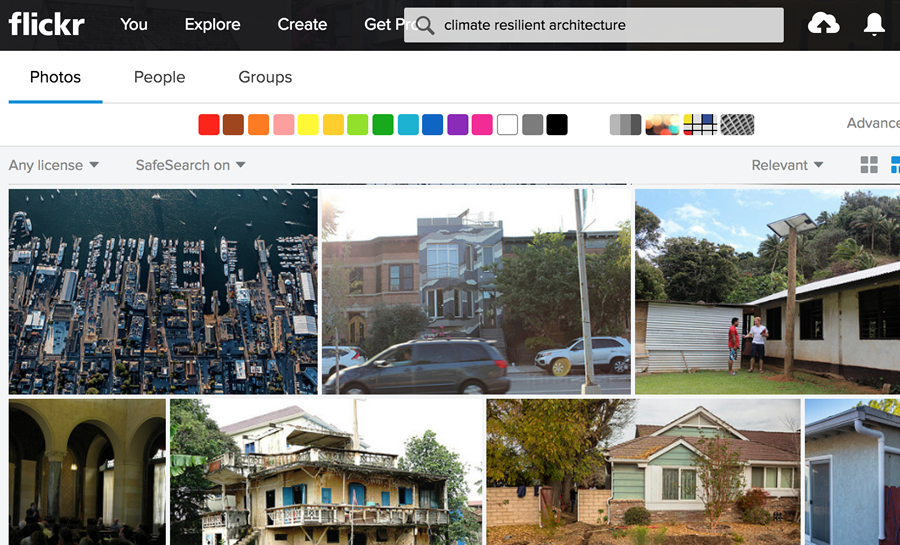 Flickr Image Search: "Climate resilient architecture"
|
|

%2C%20Malaysia%20-%20With%20The%20German%20Group%20.jpg)

.jpg)



































1.jpg)

